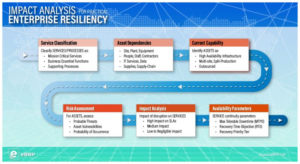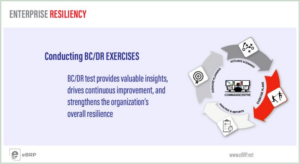As a Business Continuity Management (BCM) solution provider, the first question I ask potential clients is: What are your major program challenges? Here’s what I hear:
- We don’t have a seat at the executive table where major decisions are made.
- The program lacks executive buy-in.
- BCM is at the bottom of the priorities list for business users (No stakeholder engagement)
- It is difficult to bring all disciplines (IT, Business, Vendor Management, Executives) under one program
From my experience, getting Executive buy-in is the greatest BCM challenge. The perception that BCM does not add to the ‘bottom line’ is the biggest hurdle to overcome.
A credible BCM program is made up of more than BIAs and BCPS. The integrity of every BCM program requires that foundational data has to be refreshed periodically:
- HR contact data for keeping ‘call-trees’ up to date,
- Lists of IT Services that business functions depends on,
- Critical suppliers & customer lists,
- Operational sites where services are performed
Cross-domain data needed to sustain the BCM program is a very valuable asset that can be used by executives to make informed decisions both during an operational situation or a disruption.
- A display of all your operational sites on a map, gives visual impact to your global footprint..
- An ‘overlay’ on that map of an in-coming storm path, the area of a predicted civil-disorder – or whatever gives executives sleepless nights) facilitates impact assessment.
If Executives could see that 1392 employees are in the impact zone, a potentially critical Customer Support function may be impacted, and a production datacentre is within the cordon, this information would be extremely useful for determining their response strategy. Current cross-domain data brings visibility and awareness to your BCM program.
Give your executives something they don’t already have: the power of informed decision support. Do that and your program will take-off; and you may soon be on those Executive’s speed-dial lists.



